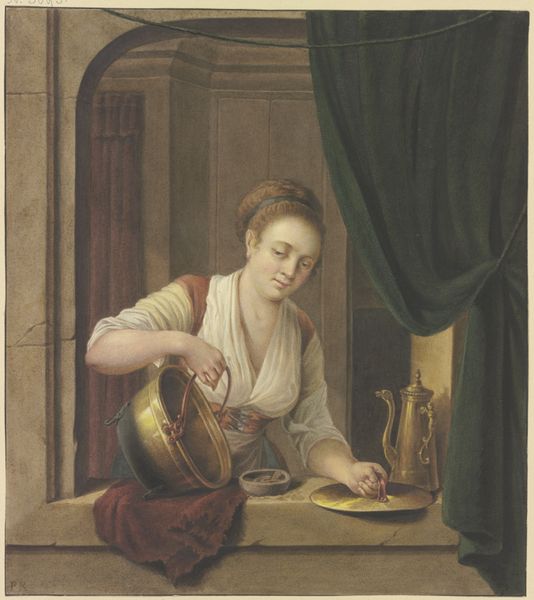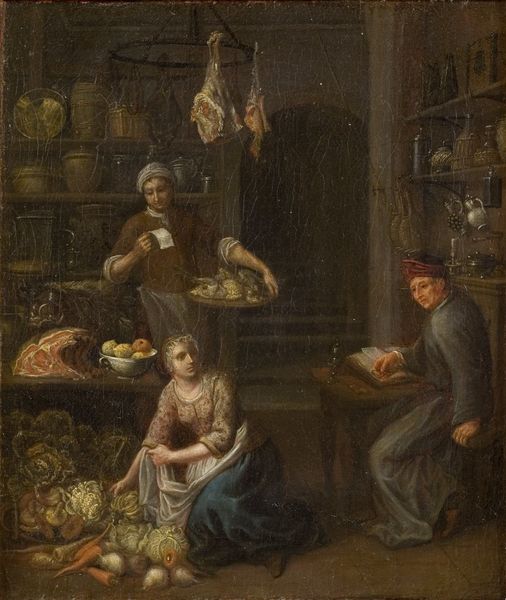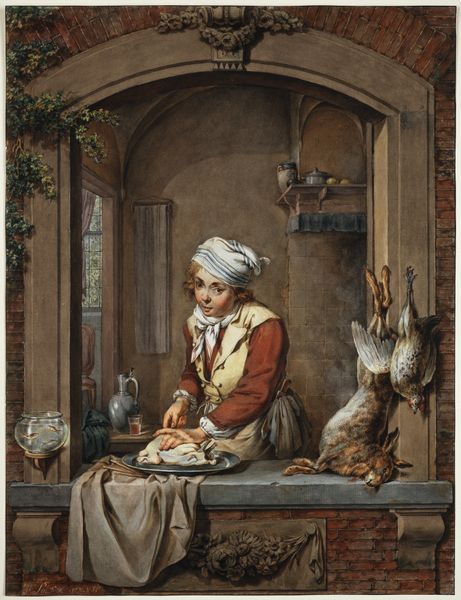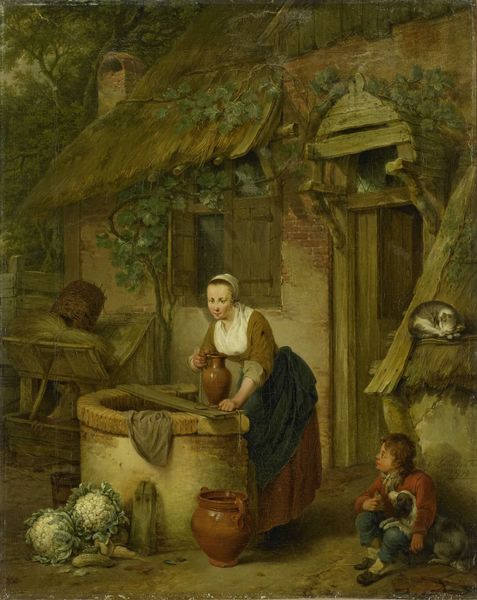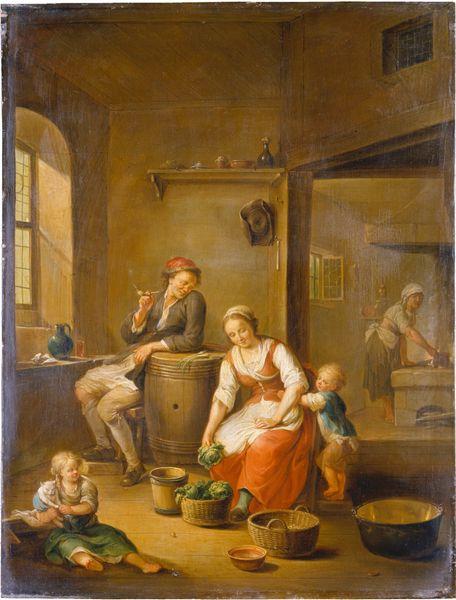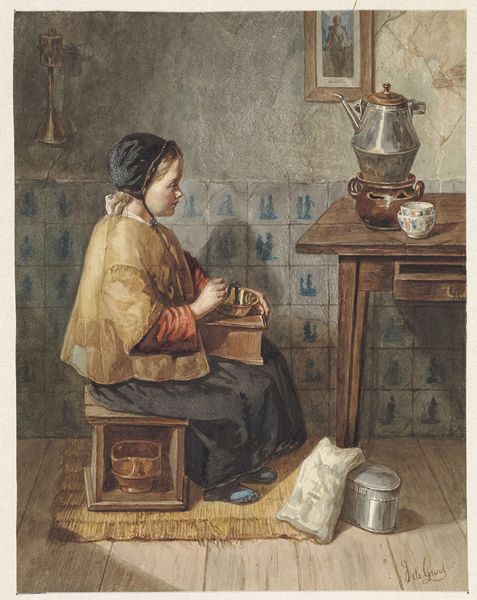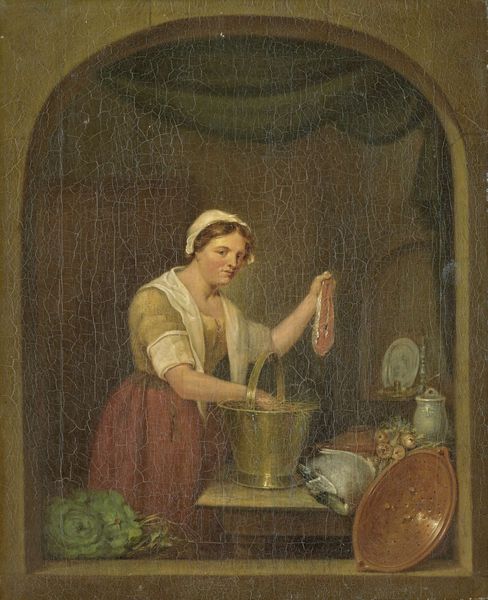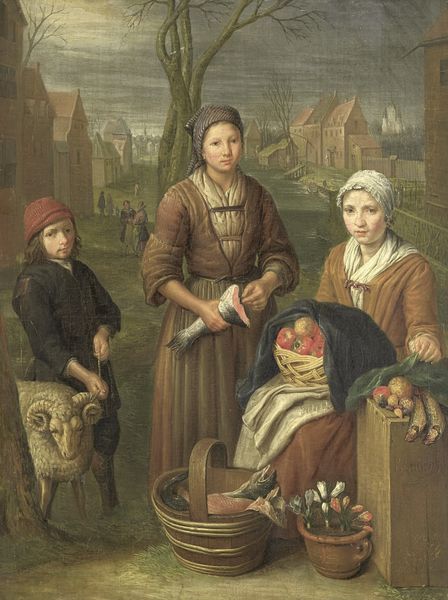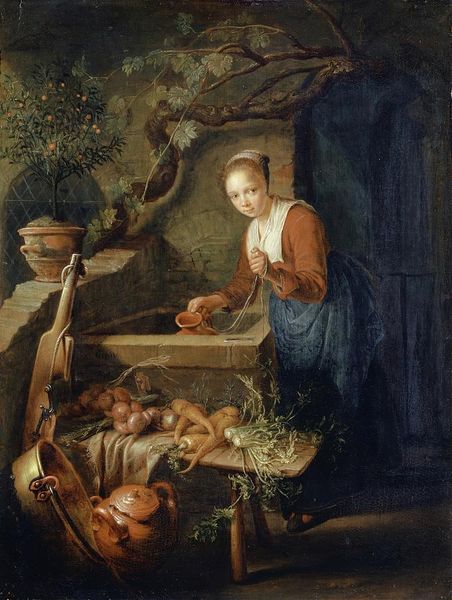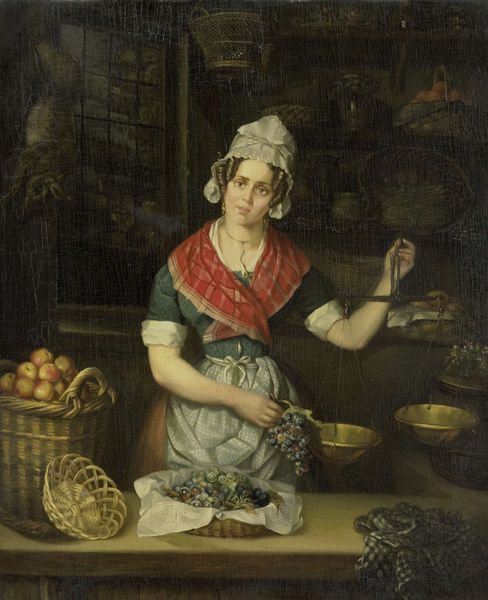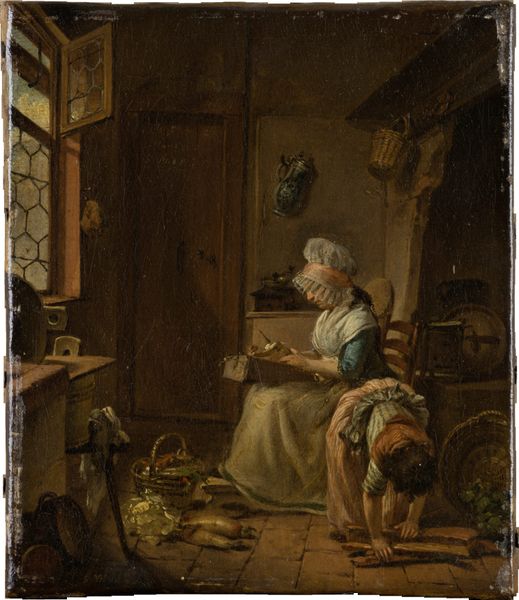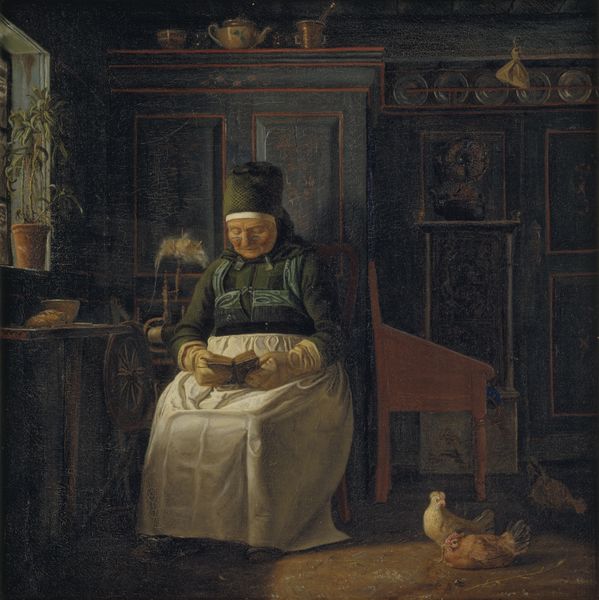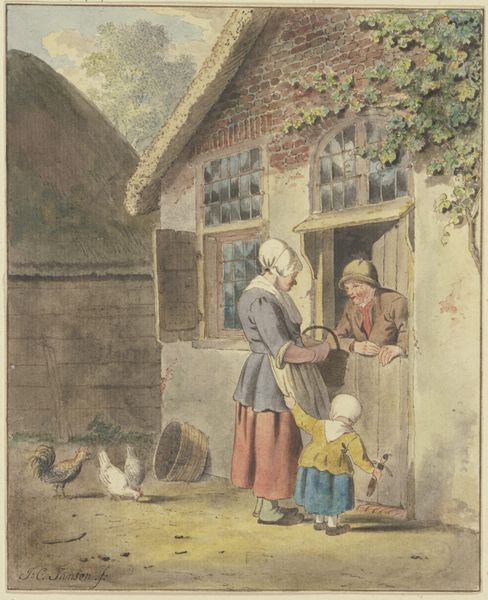
drawing, gouache, ink, graphite
#
portrait
#
drawing
#
gouache
#
landscape
#
ink
#
graphite
#
portrait drawing
#
watercolour illustration
#
genre-painting
#
portrait art
Copyright: Public Domain
Curator: Welcome. We're standing before Jacobus Johannes Lauwers' "Scullery Maid" from 1789, a meticulously rendered piece combining graphite, ink, and gouache. Editor: It's…domestic, serene. The muted tones create a tranquil atmosphere. The composition feels staged, like a glimpse into a meticulously kept world. Curator: Lauwers has framed the scene almost theatrically, hasn't he? The maid, bathed in soft light from the window, occupies the heart of the image, forever frozen in labor. Note the detail in the brickwork of the arch, versus the smooth rendered face of the figure. Editor: Exactly. Her work is essential. Someone had to prepare the meals in domestic spaces such as this, yet she's anonymous. Are we seeing the normalization and the underrepresentation of working-class women? It seems as if her likeness lacks distinct features to represent generalized female domestic laborers, not a single, distinct person. Curator: Considering the social strata, that feels quite accurate. It's all carefully constructed. The interplay of textures is fascinating - the rough basket of greens, juxtaposed with the delicate fabric of her head covering. There’s a tension between utility and a sort of quiet dignity. The objects arranged here--each has a very specific purpose in preparing food and, by extension, maintaining the material wealth of the residents of the home. Editor: It also highlights the performative aspect of domesticity. The image aestheticizes labor. She becomes part of a composition designed for consumption, her very real toil transformed into a picturesque scene. Curator: A fascinating point. Do you think, though, there's also a suggestion of her quiet self-possession, a claim to agency, even within this circumscribed world? What does that direct gaze, and tilt of the head suggest to you? Perhaps a slight commentary on domestic interiors versus outside space, seen through the small open window behind her? Editor: Possibly. Though I hesitate to romanticize a situation rooted in economic disparity and social inequality. We cannot disregard that it perpetuates the image of docile female labor. I agree she appears to return the gaze of the viewer, which is compelling for this sort of "genre" painting, even at the time it was produced. Curator: Perhaps it invites us to really consider the labour of this young woman, rather than just using her likeness as "set dressing" within a carefully crafted image? Editor: It invites analysis, certainly. Seeing this depiction through both lenses—as a record of the means of creating artwork versus as an insight to identity within labor practices—enriches the viewing experience. Curator: Agreed. It allows a conversation across time, revealing both the artistry and the often-unacknowledged labor underpinning these historical snapshots.
Comments
No comments
Be the first to comment and join the conversation on the ultimate creative platform.
